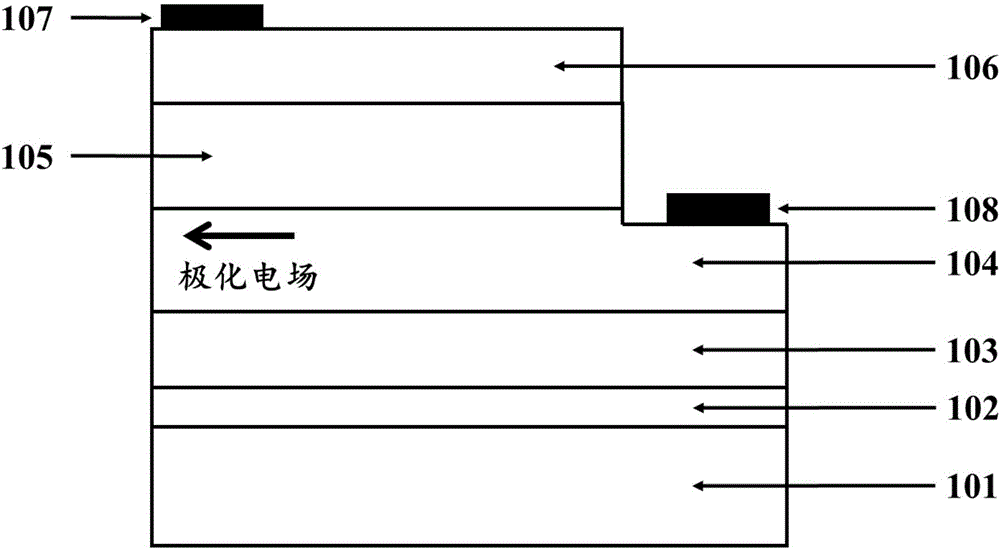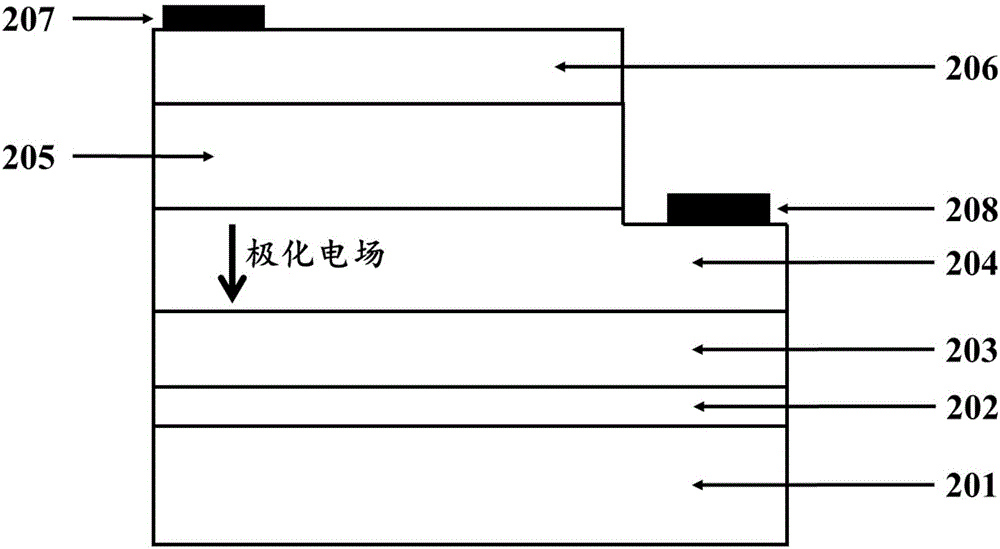Nonpolar solar cell utilizing spontaneous polarization electric field
A technology of solar cells and spontaneous polarization, applied in photovoltaic power generation, circuits, electrical components, etc., to achieve the effect of improving photoelectric conversion efficiency and improving production efficiency
- Summary
- Abstract
- Description
- Claims
- Application Information
AI Technical Summary
Problems solved by technology
Method used
Image
Examples
Embodiment Construction
[0025] To achieve the above object, the present invention adopts the following technical solutions:
[0026] The non-polar solar cell with spontaneous polarization electric field of the present invention comprises a substrate 101, a GaN nucleation layer 102, a non-doped GaN buffer layer 103, an n-type GaN layer 104, an InGaN absorption layer 105, In the p-type GaN layer 106, a p-type ohmic electrode 107 is drawn out on the p-type GaN layer, and an n-type ohmic electrode 108 is drawn out on the n-type GaN layer.
[0027] Preferably, the GaN nucleation layer 102 , the non-doped GaN buffer layer 103 , the n-type GaN layer 104 , the InGaN absorption layer 105 and the p-type GaN layer 106 are all made of non-polar materials.
[0028] Preferably, the p-type ohmic electrode 107 and the n-type ohmic electrode 108 are respectively located at the positive and negative ends of the spontaneous polarization electric field.
[0029] Preferably, the substrate 101 can be polar, semi-polar an...
PUM
 Login to View More
Login to View More Abstract
Description
Claims
Application Information
 Login to View More
Login to View More - R&D Engineer
- R&D Manager
- IP Professional
- Industry Leading Data Capabilities
- Powerful AI technology
- Patent DNA Extraction
Browse by: Latest US Patents, China's latest patents, Technical Efficacy Thesaurus, Application Domain, Technology Topic, Popular Technical Reports.
© 2024 PatSnap. All rights reserved.Legal|Privacy policy|Modern Slavery Act Transparency Statement|Sitemap|About US| Contact US: help@patsnap.com









